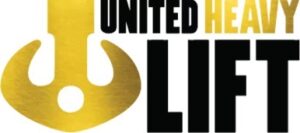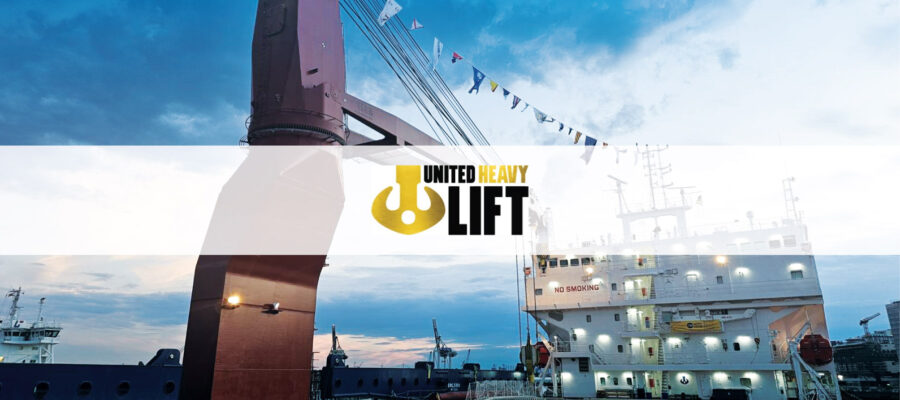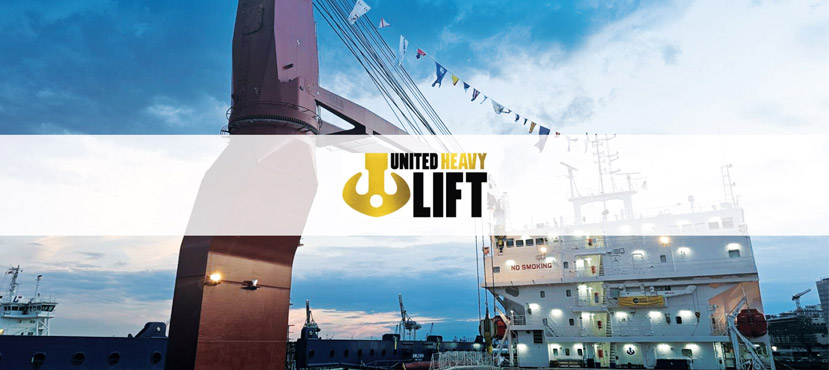Interview with
Capt. Karsten Strotmann
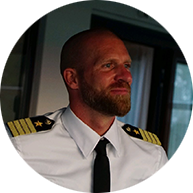
First of all Captain, could you tell our readers a little about why you decided to go into shipping and ultimately become a captain?
The same question gave me the biggest concerns during my first application in a shipping company. I never had any good answer to that.
My grandma – she may rest in peace – used to tell the story that during our first family vacation at sea, I saw a large vessel on the horizon and proudly decided: “I will become a captain!” I must have been three or four years of age back then.
To the big surprise of my parents, this childhood-dream never changed. Since my family has no seagoing background, there was no guidance along the way. Just this early wish, which kept me moving forwards, continuously and with the required dedication.
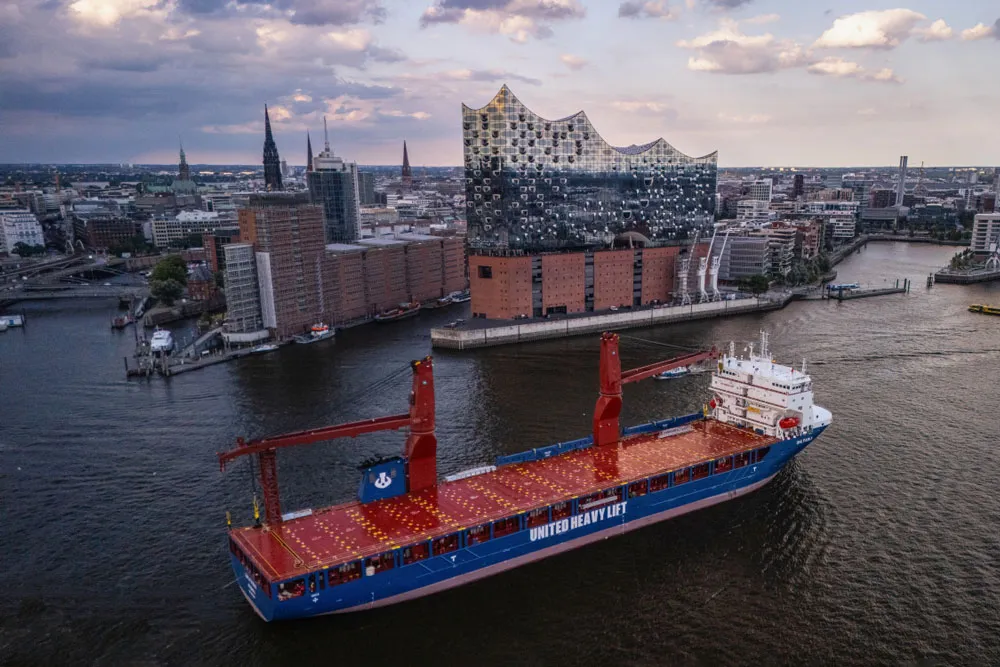
How long are you normally at sea and at home respectively?
This gradually improved during my career, reaching the top level now with three months on board, followed by three months ashore. This is a hard-earned benefit and cannot be expected as the norm in shipping. For me, this perfectly suits my lifestyle. I have this clear cut between work and leisure. For anyone who is tempted now with the thoughts like: “Yeah, that must be a great work-life-balance!”, please, keep on reading.
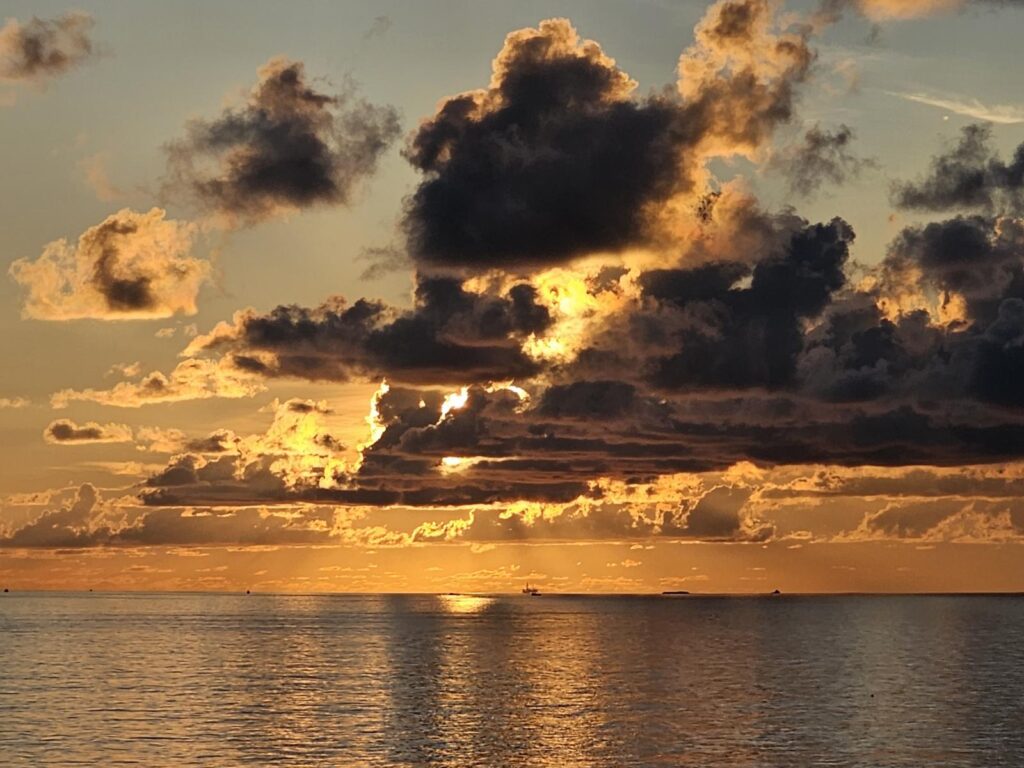
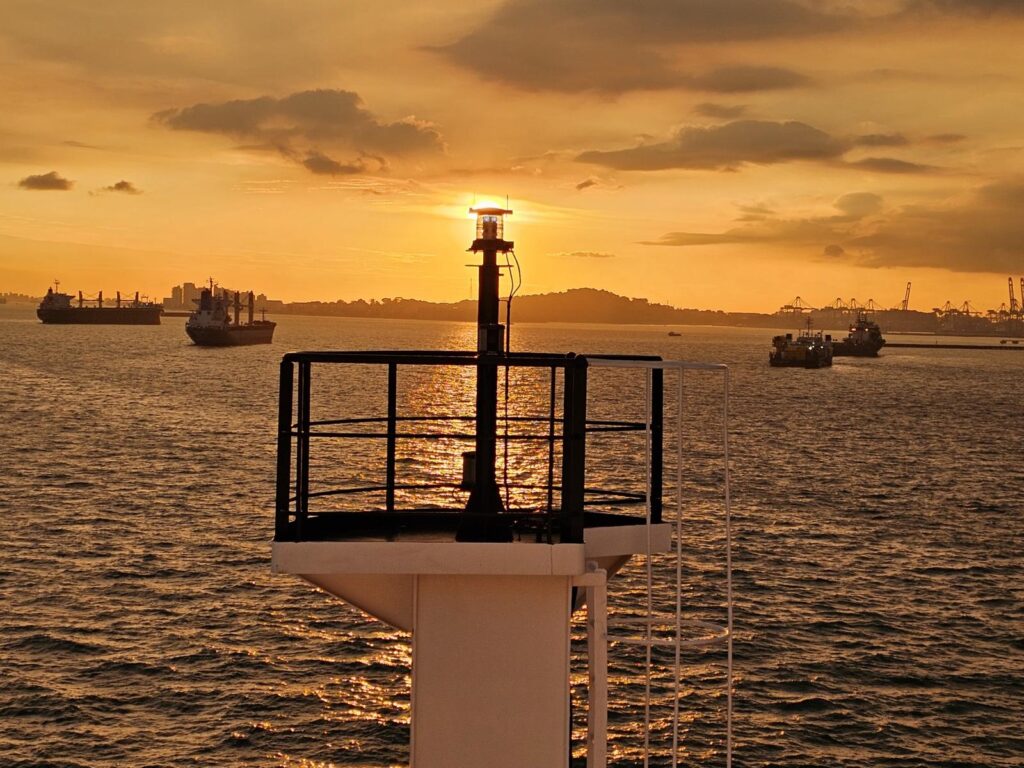
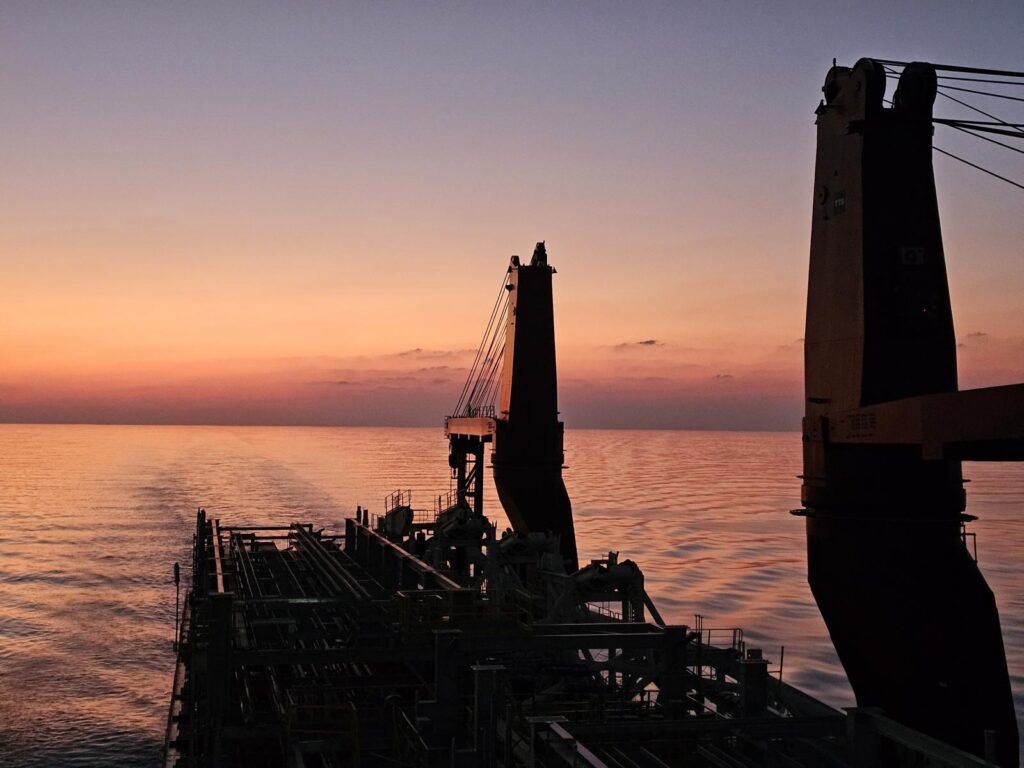
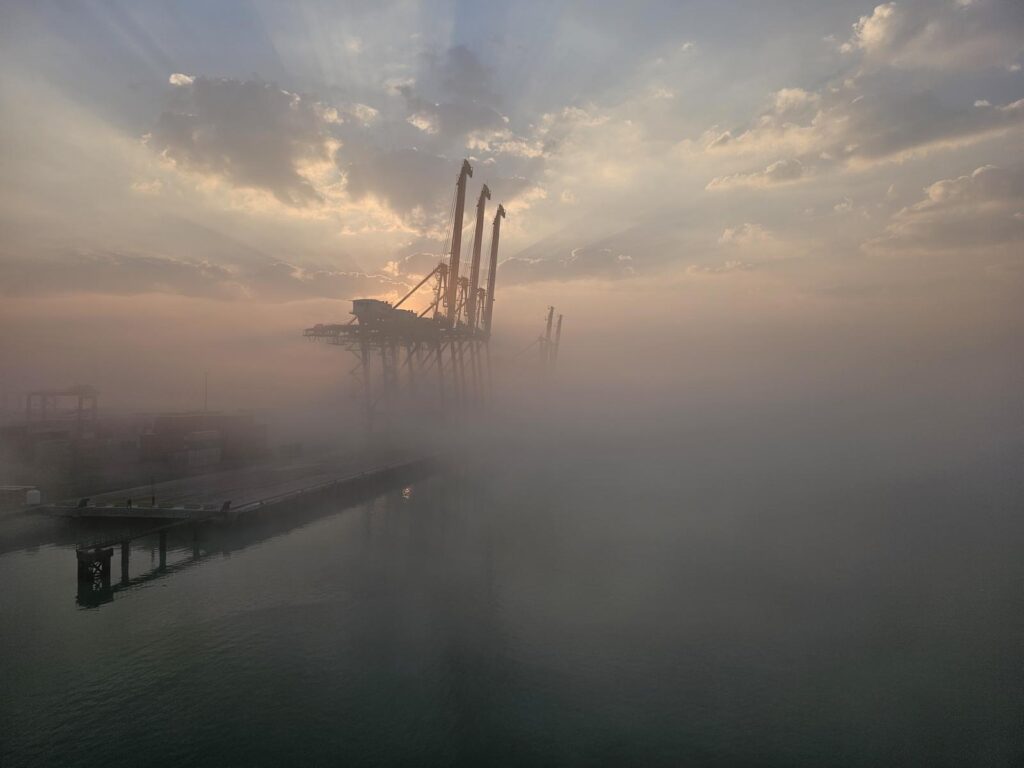
Communication and the internet are paramount nowadays. Could you elaborate for our readers about the development from before until now concerning connectivity onboard and communication between ship and shore office as well as between crew and families?
Back in the days in the navy and as a cadet, there was snail mail. Hand-written, put in an envelope, handed to an agent, hoping to receive some answer in one of the next ports.
Computers on board were rare, usually only to be operated by the captain. He was the only one with a clue as to what is going on in the world around, strengthening his position as “next to God”.
Phone lines with international calls were expansive. You needed the right coins of local money to do the calls, often with a long waiting queue of other, higher-ranked crew members ahead. After long working days in the ports, not everyone was happy to wait there some hours until it was their turn to speak to their loved ones. Or the time difference between your location and your home made it impractical to try at all.
Summing that up, you were quite isolated with your thoughts and worries, but amongst others of your crew, who found themselves in equal positions.
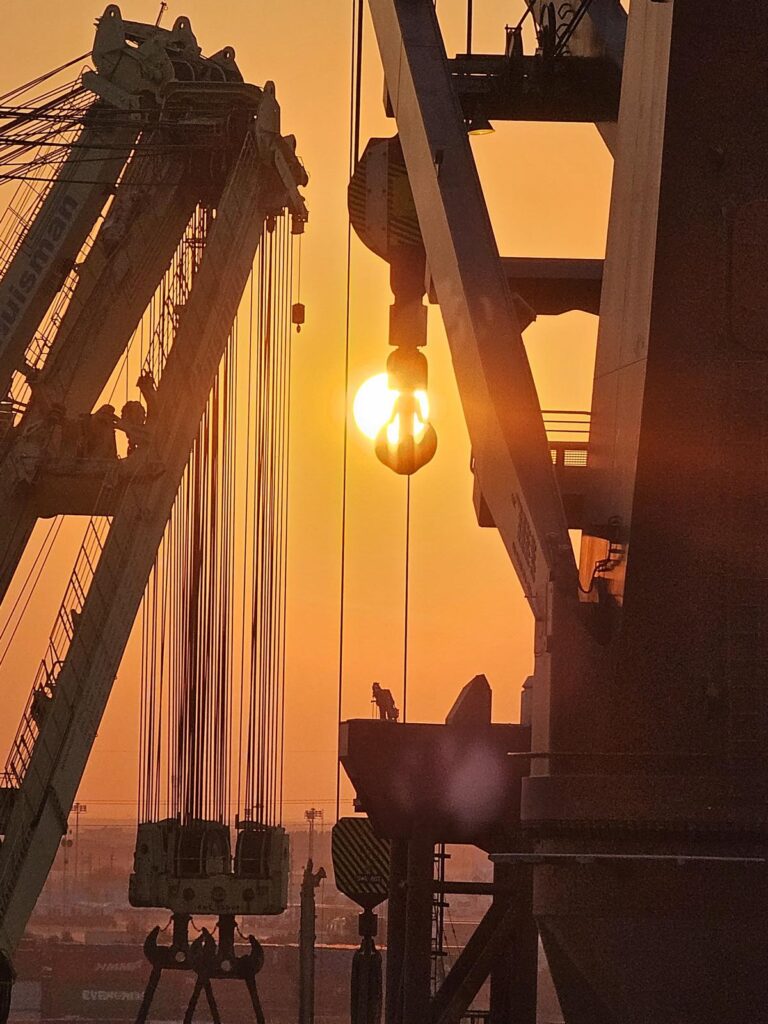

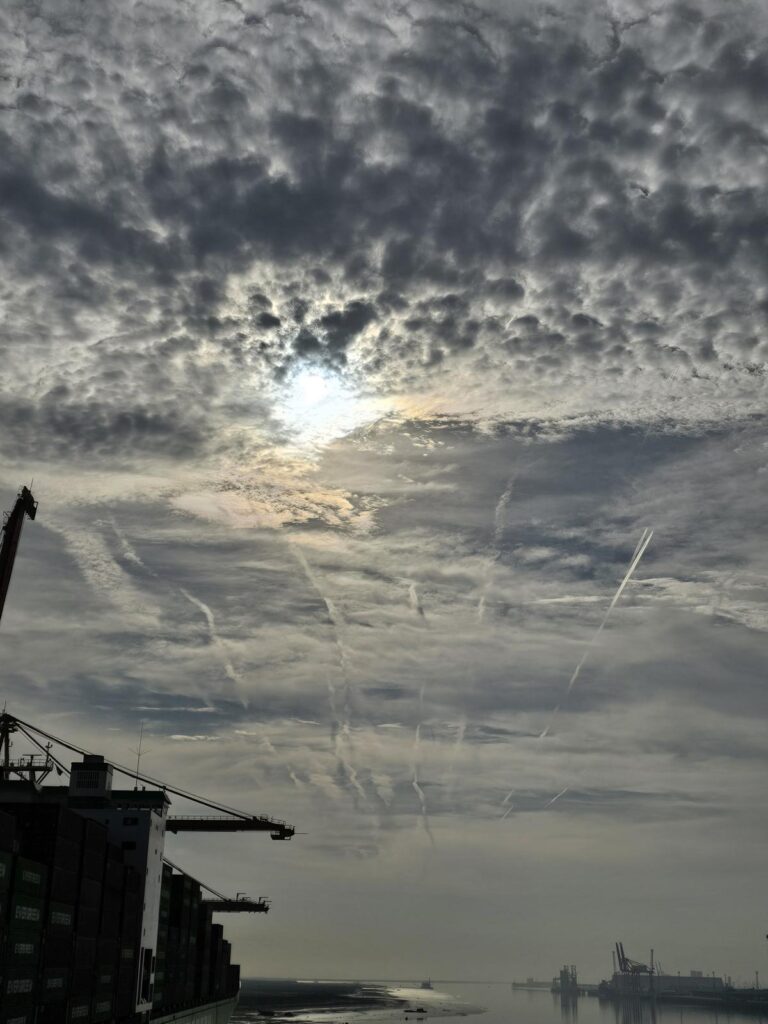
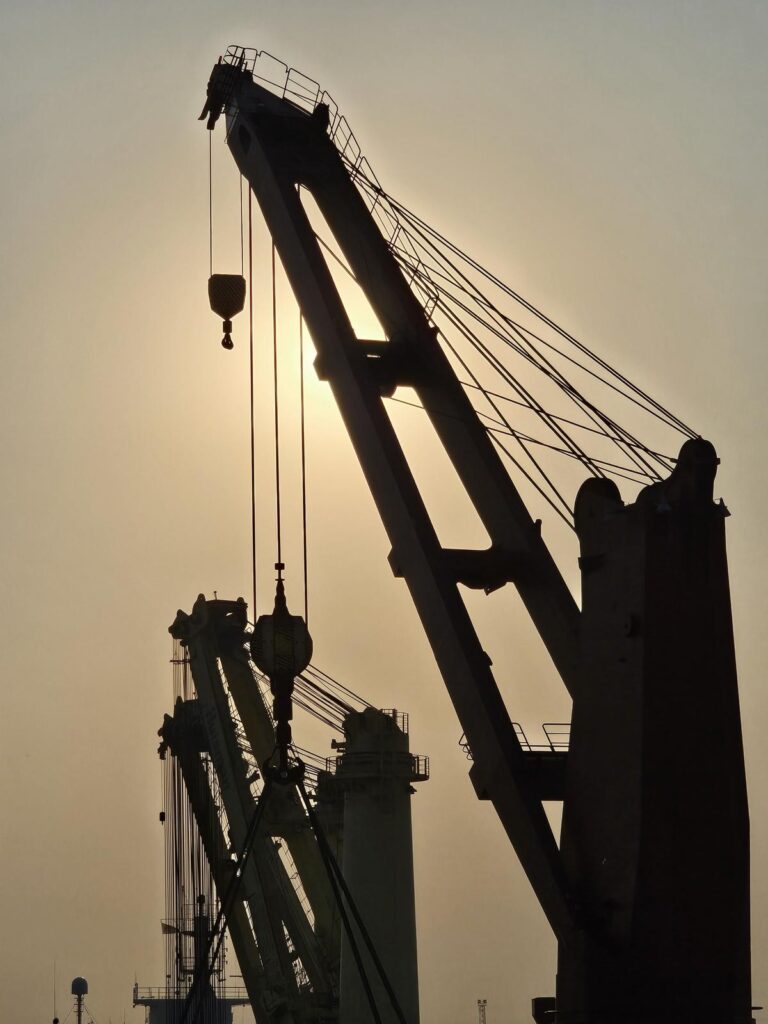
You came back home and were surprised to find a new government after some election, which you totally missed out. Some relatives passed away, others came into your family. Some of those unnoticed until the day you were back ashore.
Nowadays, the physical distance is bridged. However, there are pros and cons. We can participate in neighbourhood WhatsApp groups and know about any celebration and event going on around (but without) us. We can share the good moments. We actively participate in video calls with demanding clients planning our next cargoes, etc. And yet, you start to worry about matters you cannot change.
Ultimately, this gradually decreases the importance of the smalltalk on board, and each one now tends to isolate on board in their cabins, to spend each free minute with their loved ones back home via internet calls. An understandable development with long-term-effects to become obvious in the future.
Indeed, connectivity improved so drastically in these 21 years in which I actively sailed. And I am lucky to sail on one of those vessels fit with state-of-the-art equipment and for a company who understands the value of good communication.
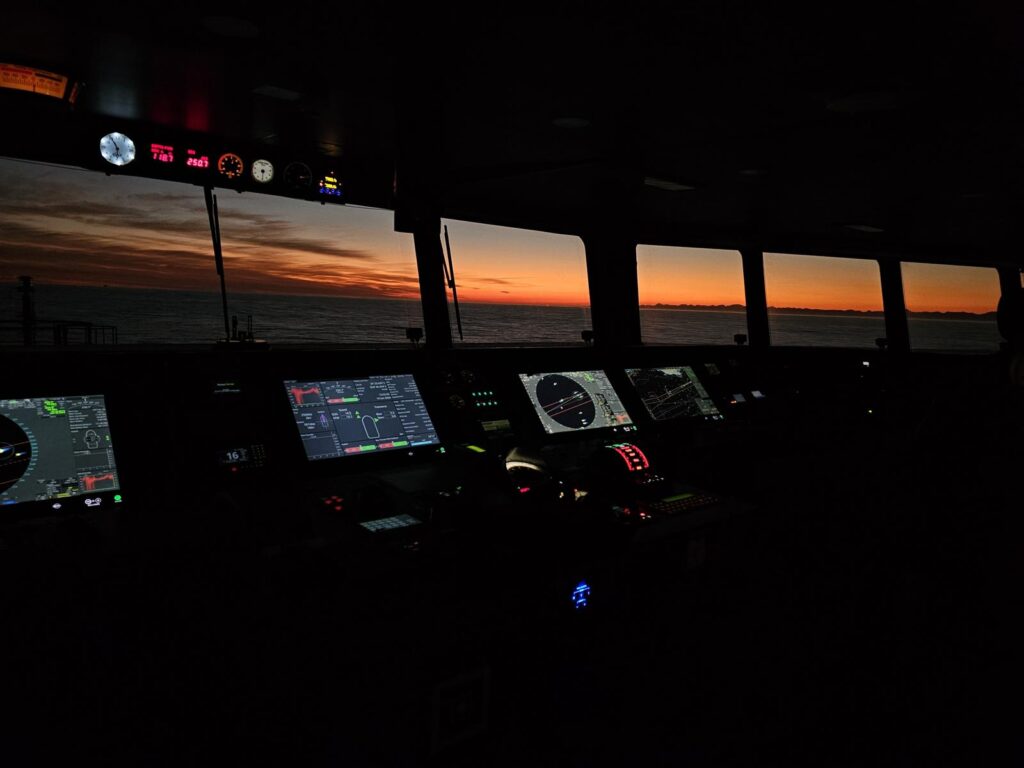
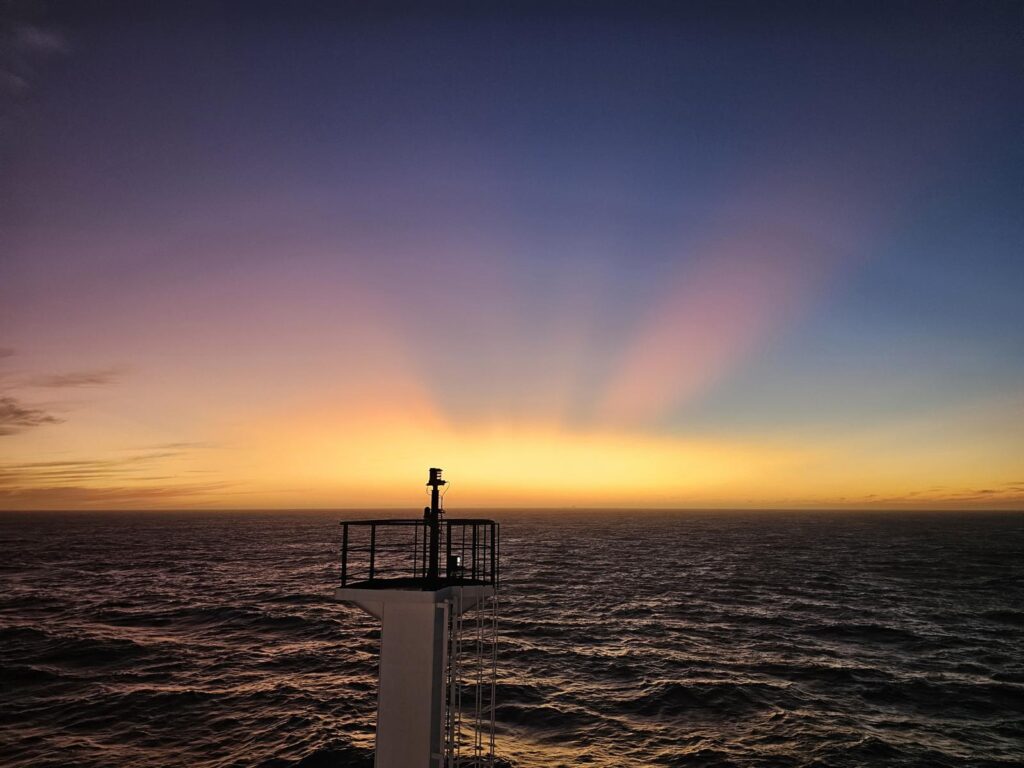
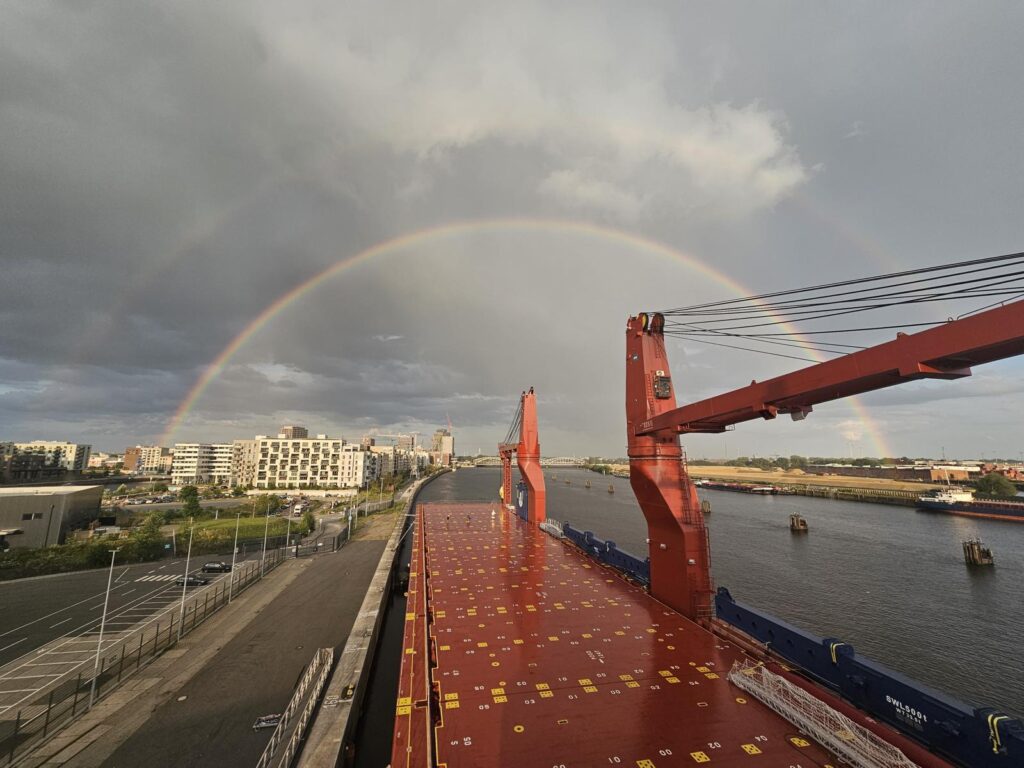
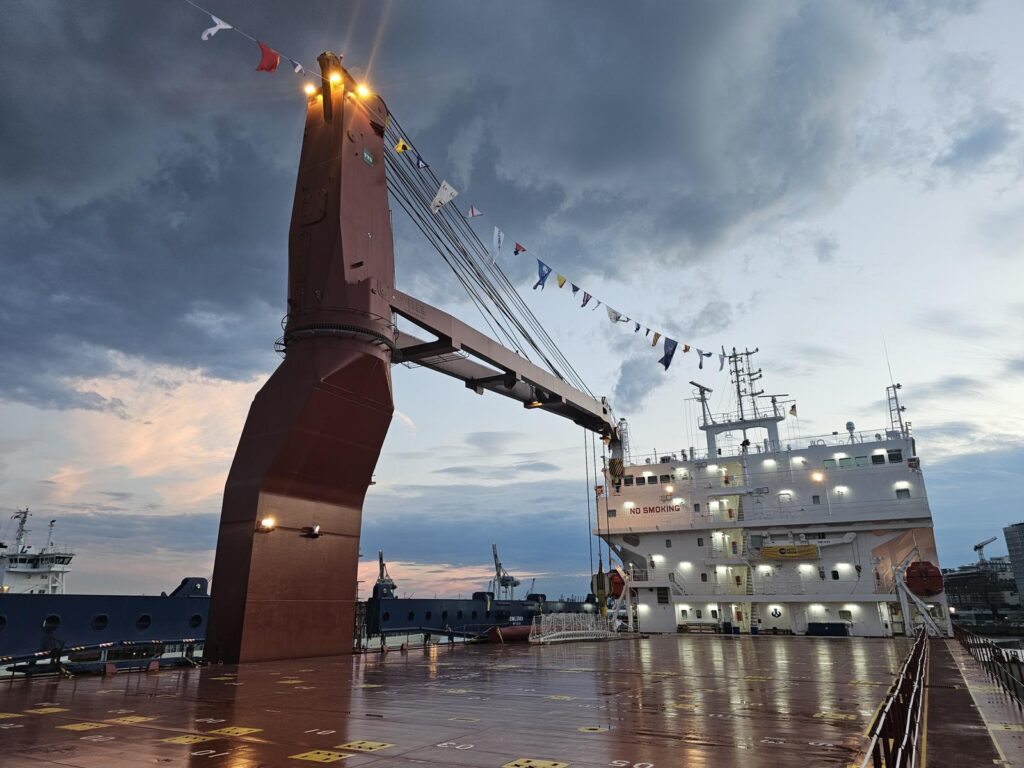
You are captain of a specialised vessel. What is special about it and what kind of cargoes is the vessel typically suited for would you say? As I understand it and can see here onboard, of course, it has 2 very large cranes. What is the lifting capacity?
The lifting capacity of each crane is 450 metric tons, adding up to 900 mt in tandem configuration. Most cargoes we see are way below this theoretical limit. Yet it ensures that we can offer transportation for many cargoes in the market.
With our six-meter extended crane base, this vessel in particular (and a few others in our fleet) are best suited for high intake of windmill blades (along other parts) required for Europe’s urge for power transition to renewables. Naturally, this vessel is often engaged in voyages transporting those parts from Far East Asia to Europe. On return voyages, we have a wider variety of produced machinery to all kinds of destinations.
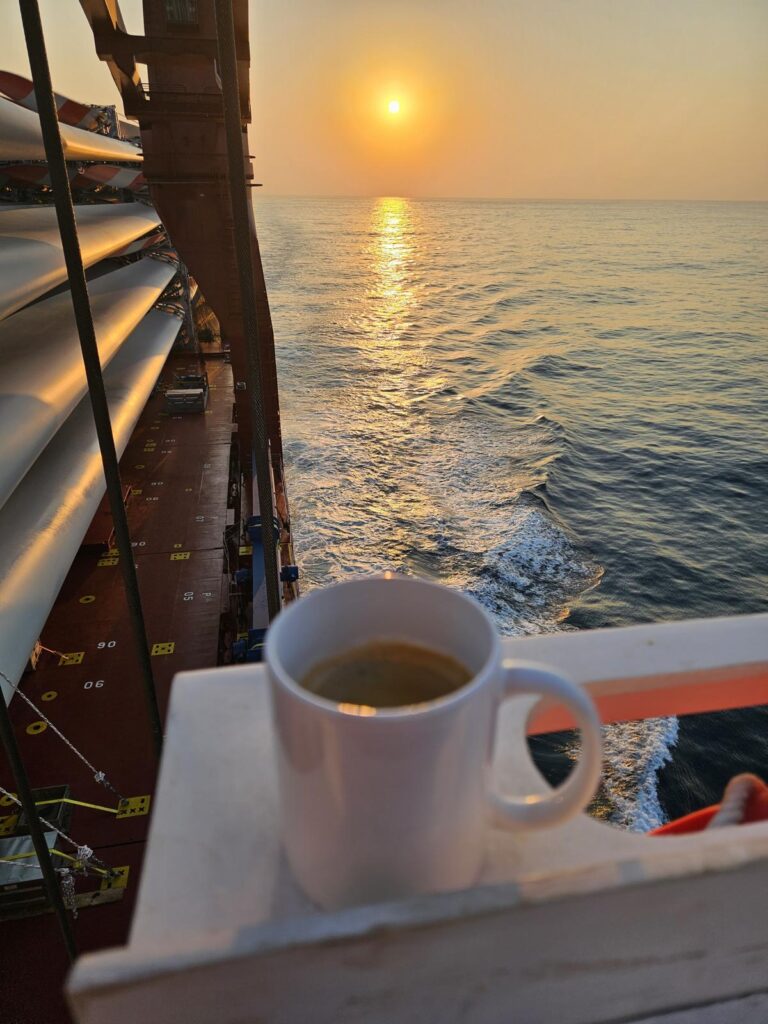
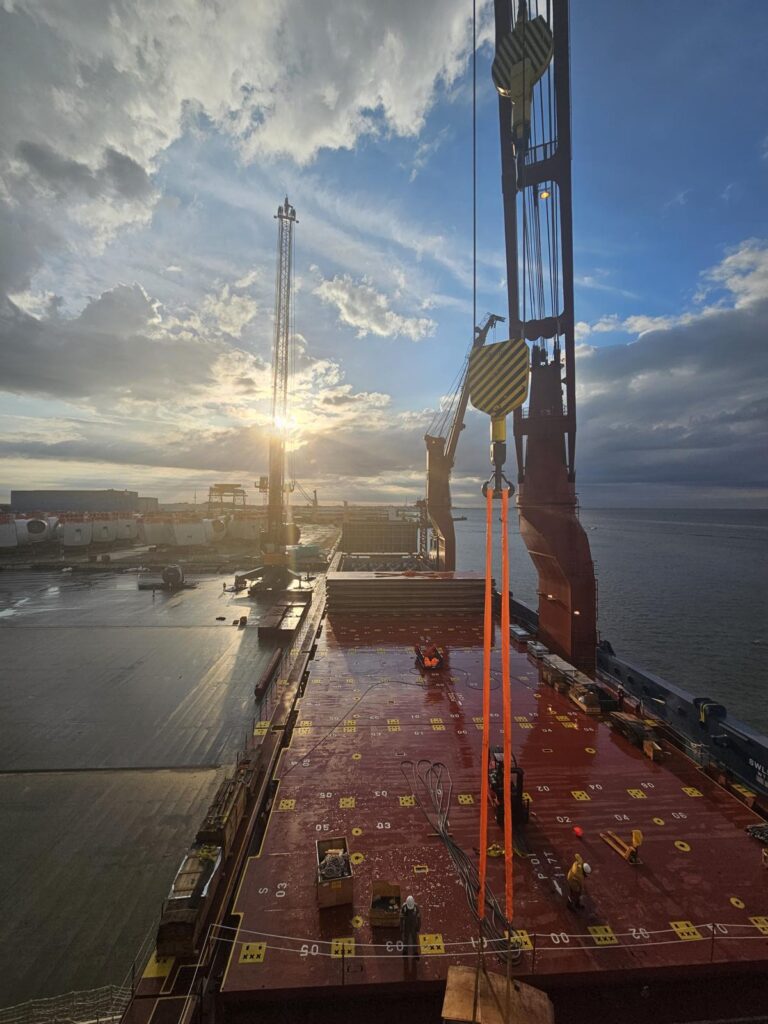
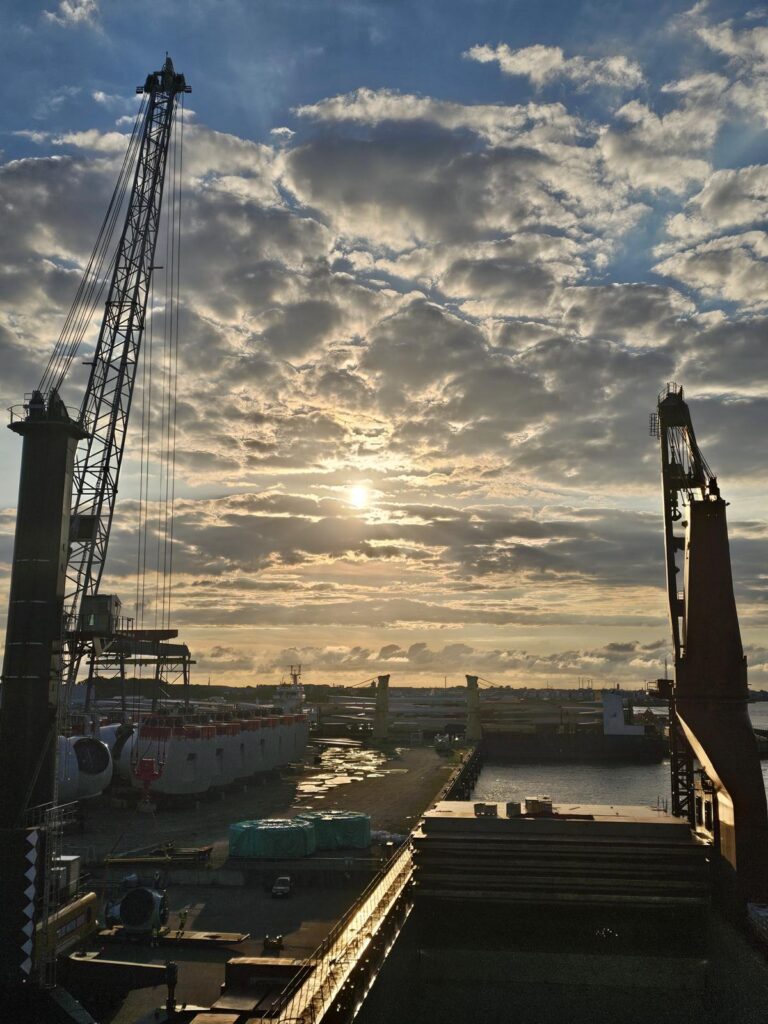
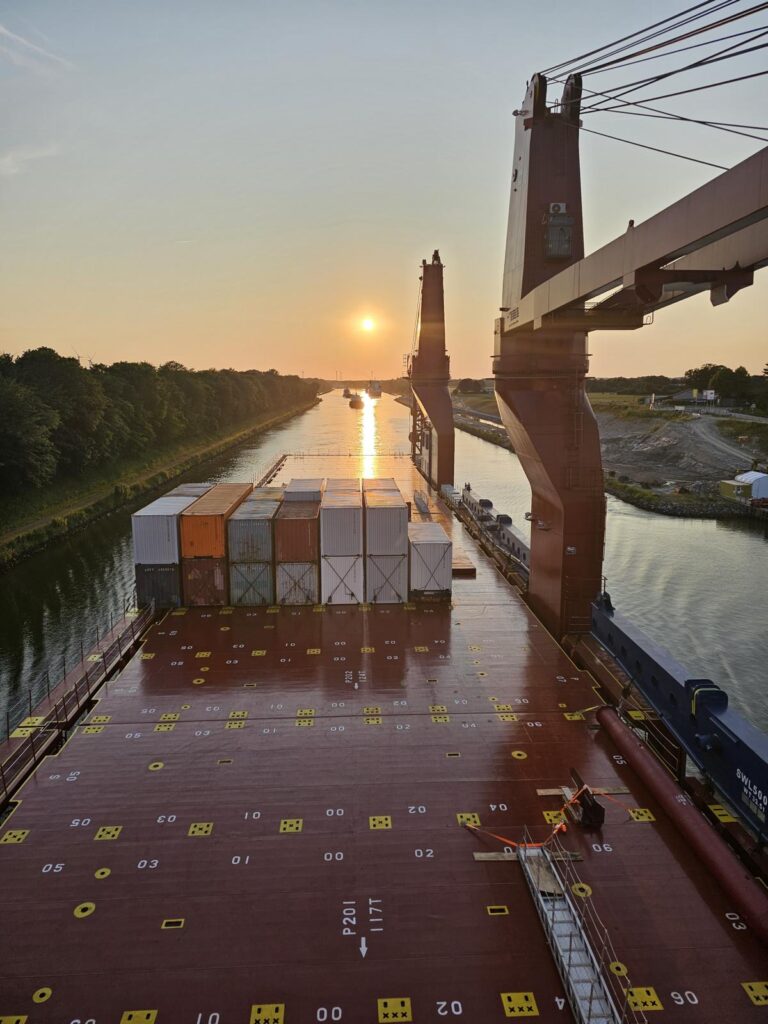
How many of this vessel type does UHL operate currently and do you operate worldwide? When was this vessel that you are currently a captain of built?
We have 19 vessels of this F900 type “Eco-Lifter”. This one is the last of the series, delivered in April 2024 by our long-term partner CSSC shipyard in Shanghai, China. Although the vessels are originating from the same hull design, there have been some revisions in terms of outfitting, one being mentioned earlier with our crane base extensions. Each of those modifications aims to satisfy changing demands in the continuously developing cargo markets.
Since delivery, the vessel has sailed more than 75000 nautical miles, or 130000 km, or more than three times around the globe, calling ports in four different continents. But this is only a glimpse of what the whole fleet achieves. It is certainly a world-wide service which we offer to our clients.
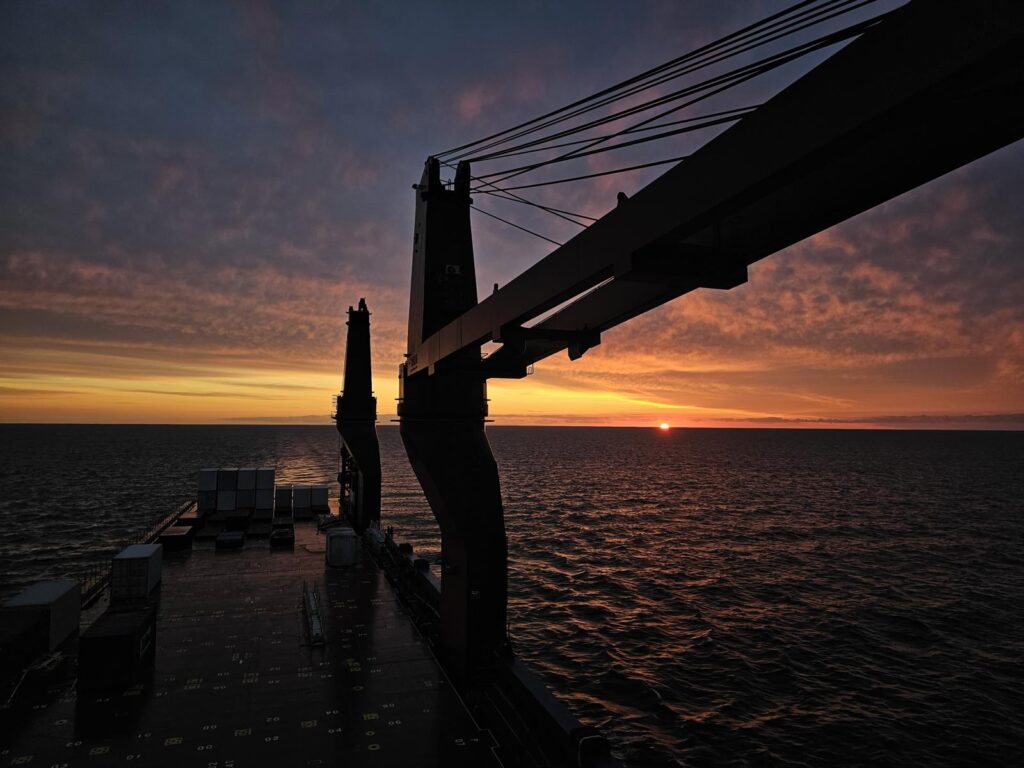
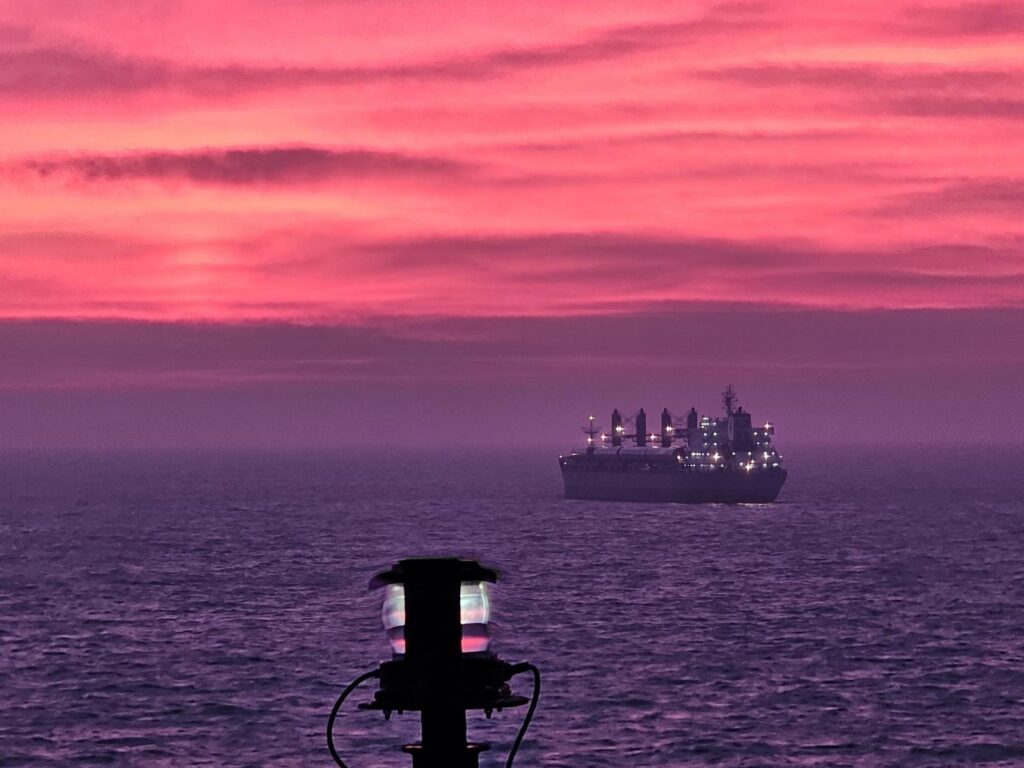
The political situation going from Asia to Europe right now means going south of Africa. How many more days would you say that it generally adds to the transit time, for example, for this voyage Port Kelang to Las Palmas going that route instead of via the Suez Canal? How much bunker (fuel) does a vessel of this type burn per day roughly?
Connecting Europe and Far East Asia via the Suez Canal saves around twelve days, or vice versa, we now have up to two weeks longer passage when you count in all the adverse weather you can encounter along the extended route around Africa.
That also requires around 250-300mt more bunker fuel for a vessel of this type. And yet, this is a highly fuel-efficient vessel in the market, meeting strictest IMO tier III emission requirements. Other companies suffer much worse, due to their aging fleets with less efficient vessels.
Fuel efficiency is one of the key factors to maintain this business in a profitable manner. And one of the major contributing factors is how many goods are carried on each voyage. Our passengers may have noticed that our cargoes consume all available space, there is nothing vacant on board. This is a huge commitment achieved by combined efforts with our chartering and engineering departments, ensuring that we utilize the vessel’s capacities to the maximum. This is one of the keys to any sustainable approach, which we are quite proud of.
Challenging times require all of us to work together on solutions and to literally “go the extra mile” when needed!
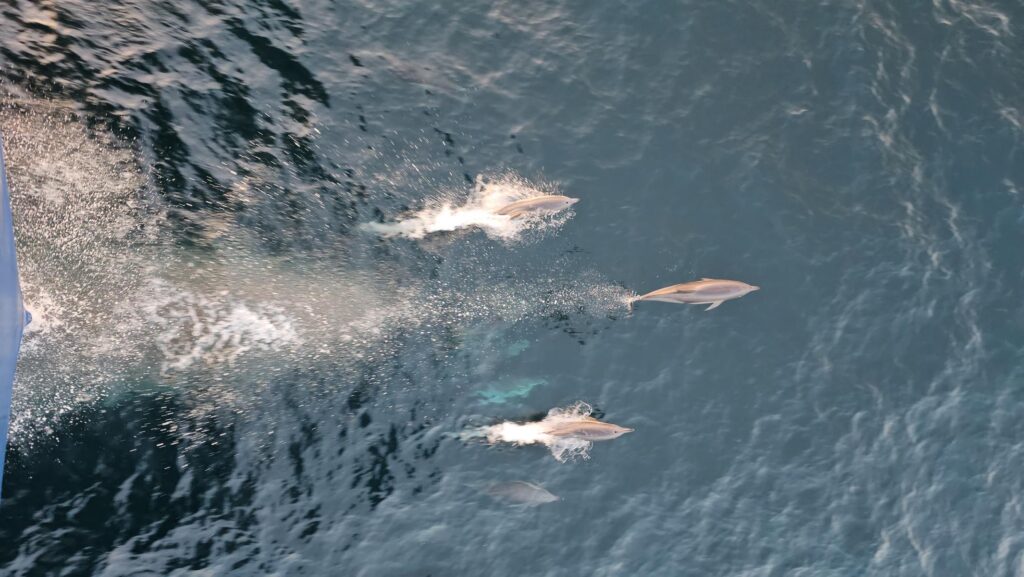
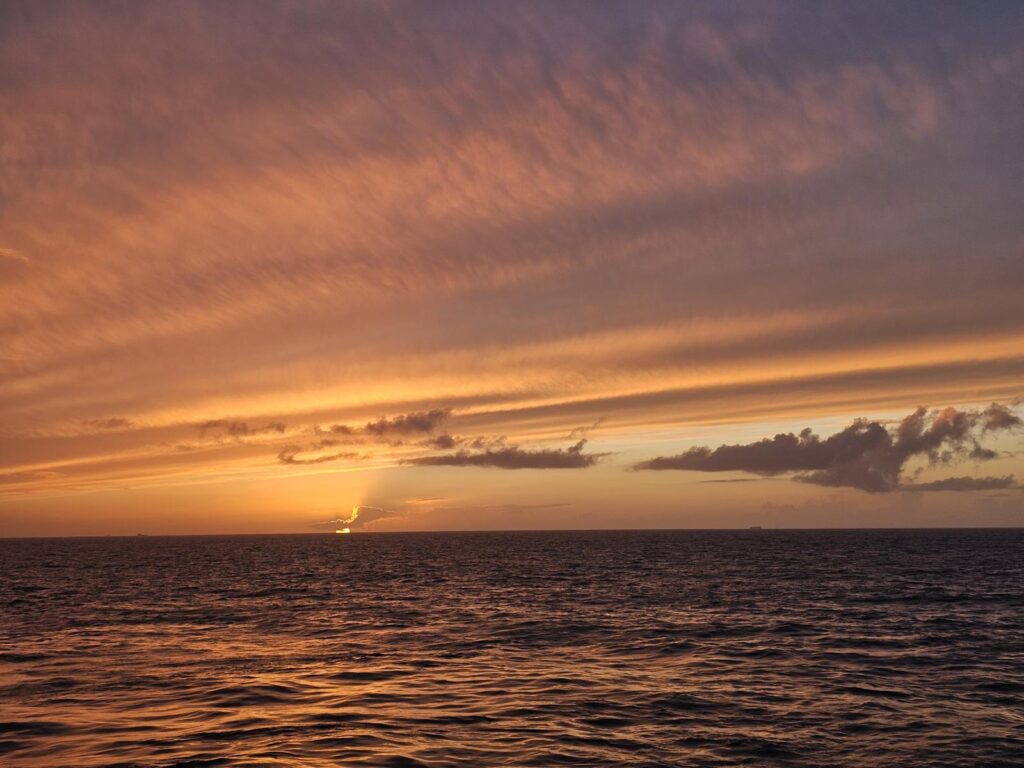
What do you particularly like about your job as a captain? There must be some fantastic views (as I have seen myself onboard) on the ocean.
A huge part of my job satisfaction comes from the variety of aspects. Of course, a certain routine sets in as common to most repetitive tasks. But sometimes you have the focus on cargo planning, sometimes on weather routeing, sometimes on accident prevention, sometimes the ship’s maintenance, sometimes on mentoring young sailors, and so much more.
No voyage is equal to any other. No shipment is equal to the one before. And by working with so many people from all over the world, you have the chance to maintain a wide horizon and differentiated view on many topics.
And yes, the mentioned clear cut to my private life. I leave my captain’s headaches at the gangway when I sign-off. What I keep in mind are all the great occasions, which you also briefly mentioned. Some of the best views are only anchored in my heart, but sometimes I was lucky to capture those in a decent photograph (included some recent photos in this interview).
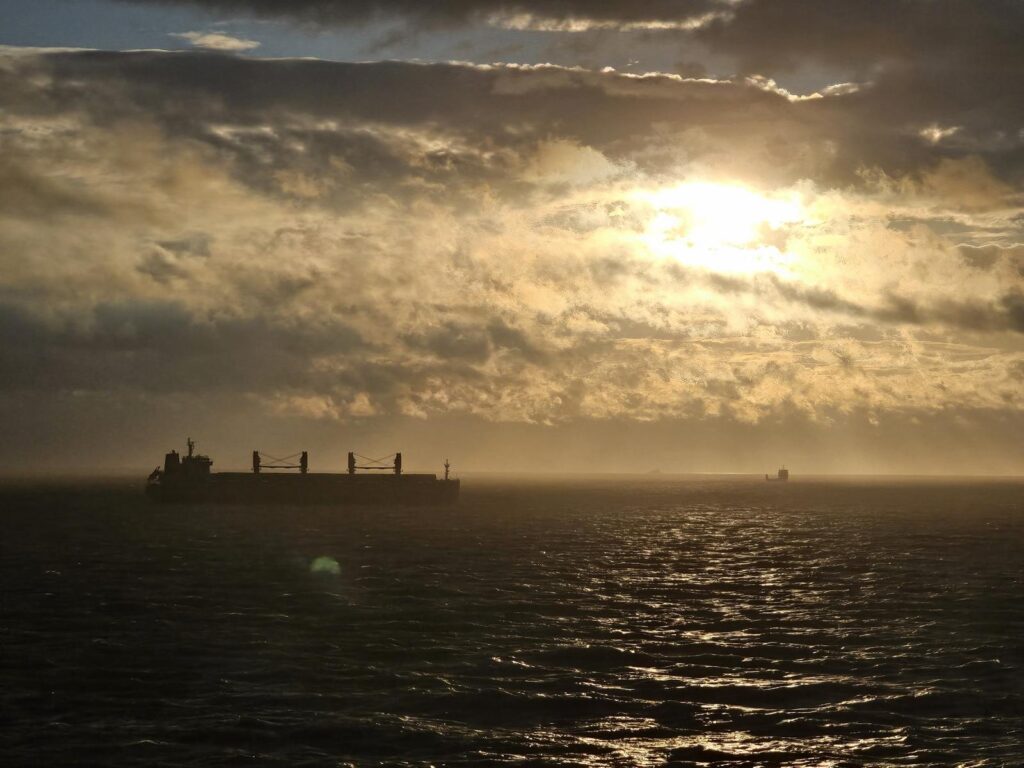
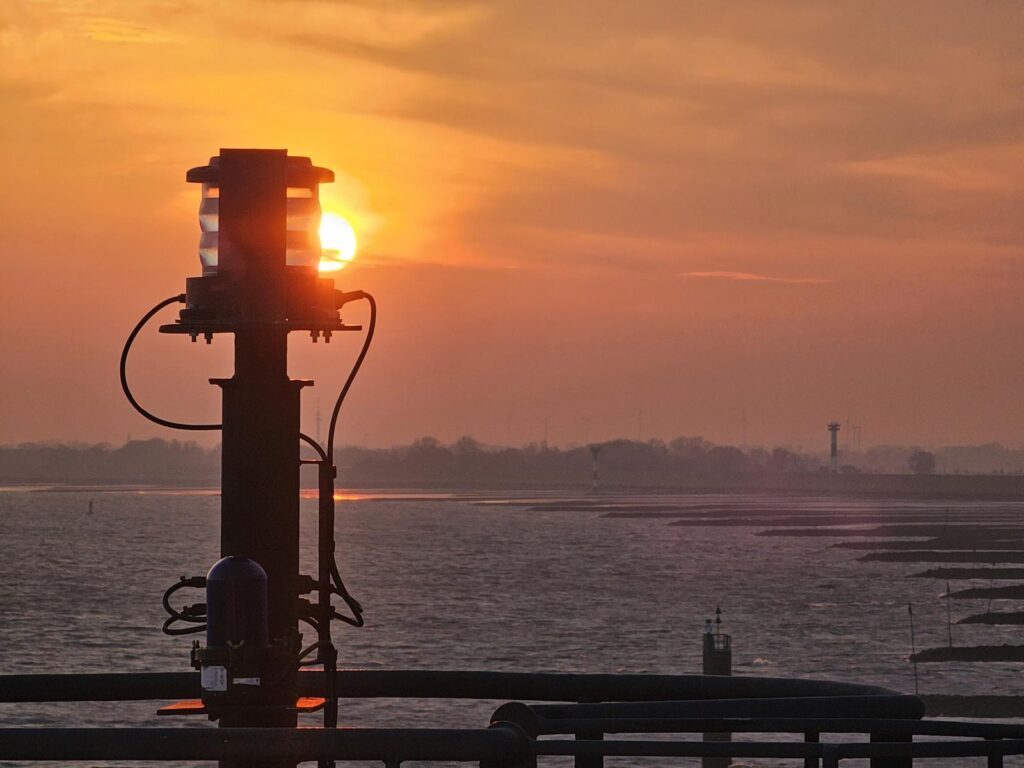
Every job has plusses and minuses. If you think about the downside of being at sea in 2025, what would that be?
More stringent compliance programs and legislative administration workloads form a major part of our daily routines. A shore-based company may tackle those by hiring more personnel.
On board, our space is limited. We have a certain set of people, who tend to “drown” in paperwork and documentation. Often there are several levels of documentation for the same event, just for different authorities and control entities. This daily struggle to stay ahead of the game can destroy anyone’s motivation and you need to develop highly efficient routines in order to keep-up at all. So far, every single attempt I encountered which aimed to improve this situation ultimately lead to even more of a workload.
“Safety on paper” is unfortunately not what keeps people alive, vessels afloat, and precious cargoes reaching their intended destinations. It takes skilled and well-trained people, who have the chance to stay focussed! I assume that some of the readers will have similar thoughts when reflecting on their businesses and worries.
Apart from that being said, one of my favourite sayings is: “There are no problems, only solutions!” And this is where our crewing department jumps in, trying to develop people in-house, “From cadet to captain”, who will have the required knowledge and resilience once reaching the demanding positions.
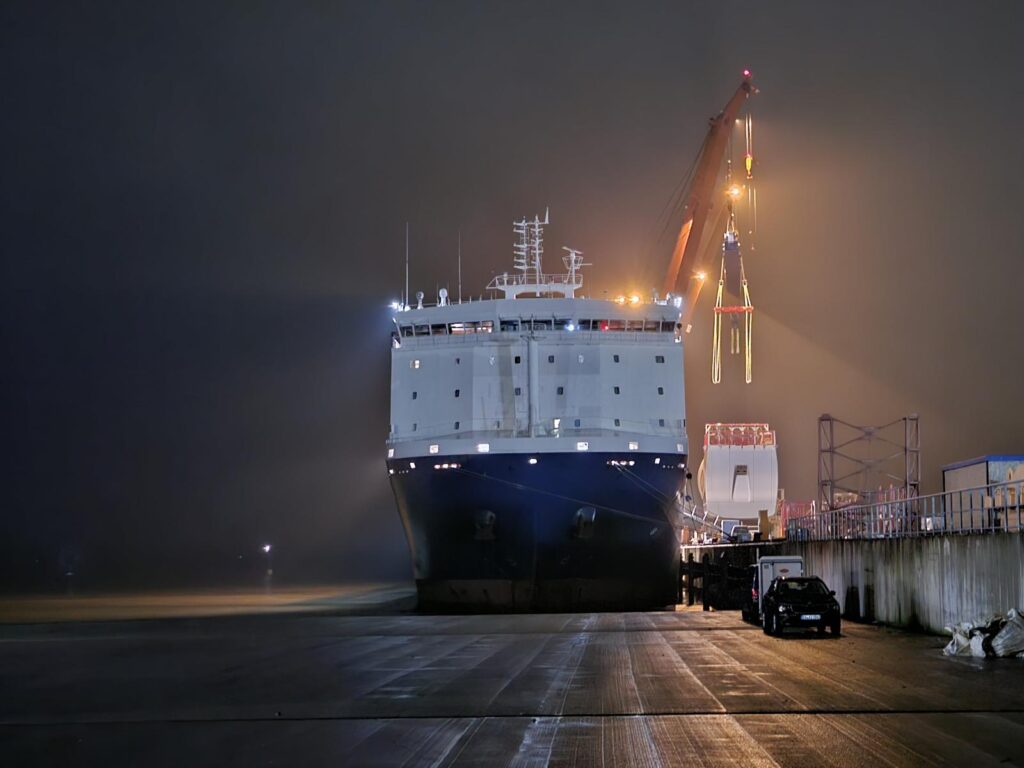
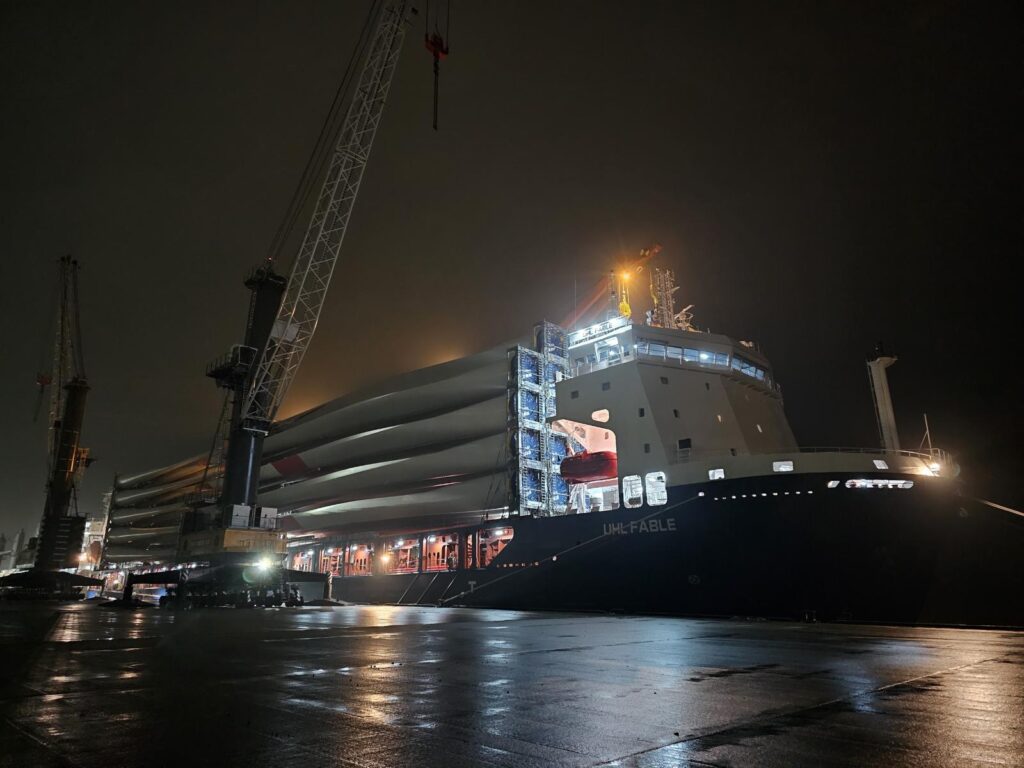
How many ports around the world would you say you have visited during your career onboard?
That question made me count. It sums up to around 200 different ports in 60 different countries – not counting repetitive calls. Thus, there are still many places to go!
How would it be best for our readers to get in touch with United Heavy Lift if any reader would like to become a seafarer in UHL or become a customer of UHL?
For those who have a transportation inquiry, please get in touch with:
Chartering inquiries
chartering@unitedheavylift.de
+49 40 3085424 00
Project inquiries
projects@unitedheavylift.de
+49 40 3085424 00
For those who are interested in becoming part of our crew, please reach out to:
UHL Crewing
career@unitedheavylift.de
For anyone else without the intention to smell salty air every day, but still wishes to contribute to a great shipping company, we look for talented and motivated people in many different positions. Just follow the usual channels on LinkedIn or check directly on our homepage: https://unitedheavylift.de/career/
In the end, a vessel can only perform as well as the many dedicated persons in the office backing it, and the strong team we form together as one service provider.
